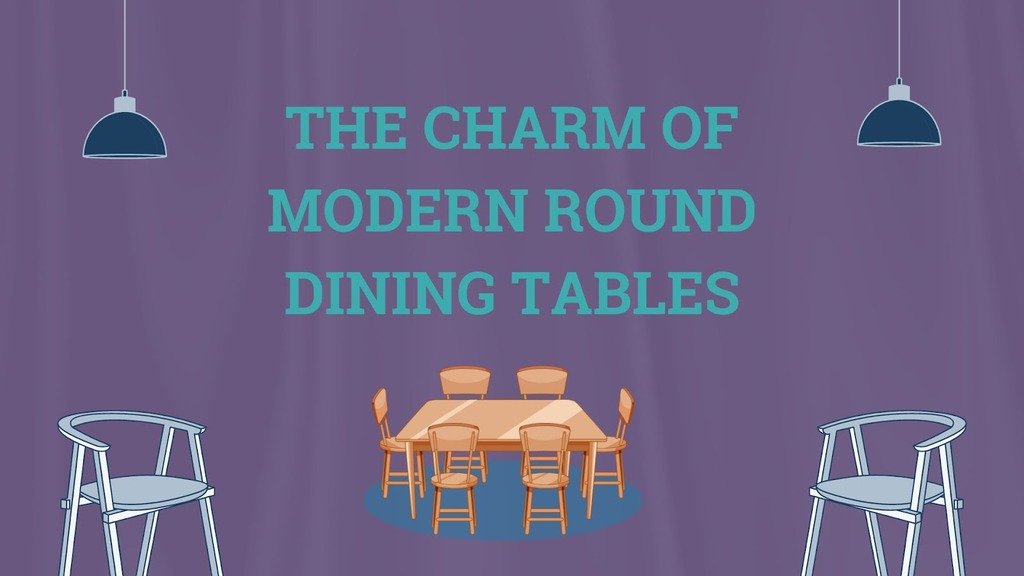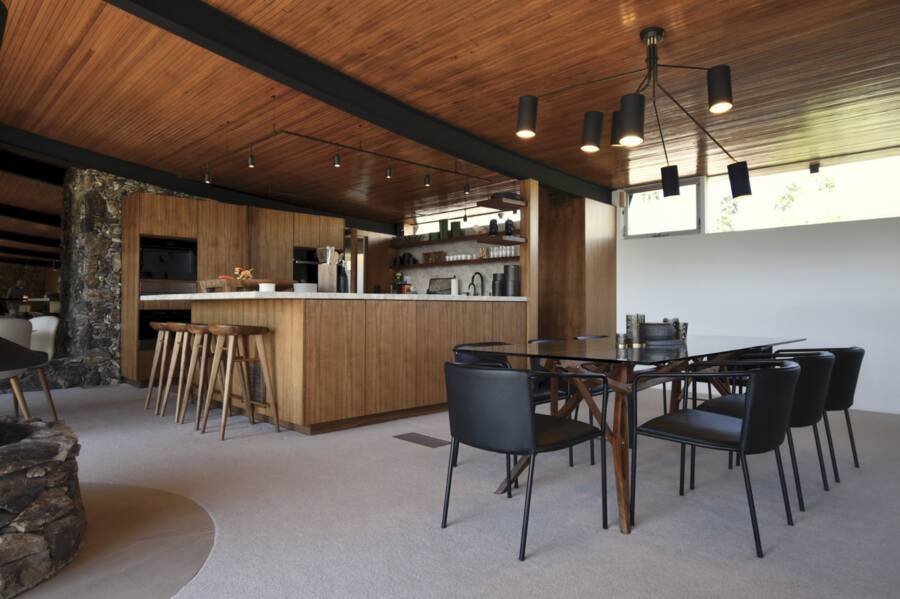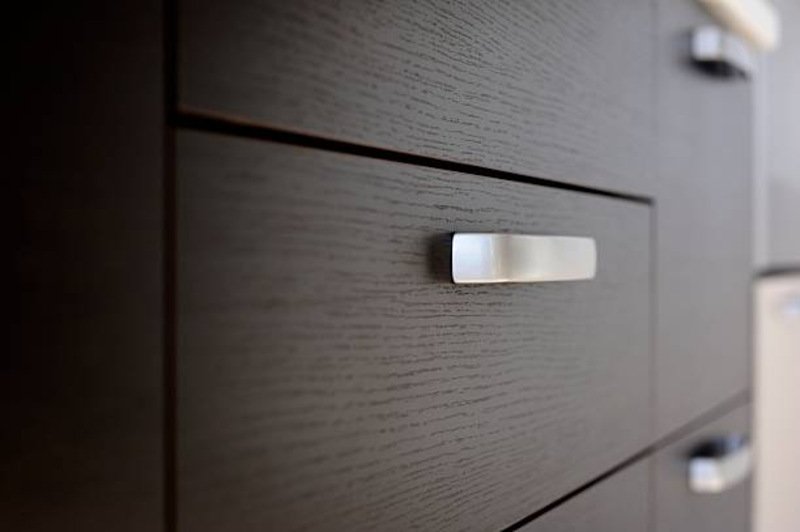The dining table is a key part of furnishing in any home. It’s a place where people gather to eat, interact, and spend quality time with their loved ones. Dining tables have long been an inherent part of human society.
A dining table is not just a typical piece of furniture but also a symbol of social gatherings and hospitality. Over time, dining tables have evolved from simple wooden structures to intricate and luxurious designs.
But where did the dining table come from and how has it developed over time? In this article, you will look into the interesting trip of dining tables, and the direction of the modification from conventional to modern styles, with a special focus on the attractiveness of recent round dining tables.
Whether you’re a design enthusiast or simply looking for the perfect dining table, this article explores the significance of modern round dining table and their intriguing evolution from the past to the present.
The Era of Traditional Dining Tables
In the early days, dining tables were mostly made from solid wood, showcasing naturalness and practicality. Traditional designs have the concept of rectangular or oval shapes, frequently followed by detailed shapes or indications that represent ethnic patterns.
These tables were the center of family gatherings and communal meals, providing a sense of closeness and unity.
Ancient Egypt
The early famed dining tables were established in ancient Egypt, where dining tables were utilized by the rich to show their wealth and status. These were made from wood or metal and were elaborately engraved and jeweled.
The tables were rectangular or oval in shape and were based on four legs. They were frequently decorated with the shape of hieroglyphics and other decorative designs.
The tables were used to serve food and drinks and were also used for meetings and recreation. The rich people often host dinners and feasts on their dining tables and invite their friends and relatives to eat with them.
The tables were also used for spiritual occasions and practices. Generally, ancient Egyptian dining tables were a symbol of abundance and position. Dining tables were an essential part of rich people’s life
Ancient Rome
In ancient Rome, dining tables, or “triclinium,” were also used for couches meals, although these were more detailed and featured three couches arranged in a U-shape. The center of the U was left open for a table, which was frequently decorated with art and other decorative elements.
Ancient Greece
In ancient Greece, dining tables were mostly round and down to the ground and were assisted by cushions or mats for seating. These had 3 legs to make a better sense of equality.
European Middle Ages
During the Middle Ages in Europe, dining tables were developed to provide alteration in dining habits. As people started sitting on chairs instead of leaning on couches, tables became bigger and more rectangular to suit the new seating setup.
They were also made of oak, a strong and lasting wood that may hold up the wear and tear of daily use.
16th Century England
In the 16th century, dining tables started to proceed in more decorated and ornamental forms. The Dynasty period in England saw the emergence of the “great table,” a large, in elaborate way carved, and deluxe part of furnishing that was utilized for ceremonial dinners and feasts.
17th and 18th Century
In the 17th and 18th centuries, dining tables became more suitable and organic. The middle-class movement led to small activities and more inexpensive tables that may be utilized in the home.
These tables were rarely made of oak or mahogany and were fashioned to be easily elastic to fit larger groups.
19th and 20th Century
In the 19th and 20th centuries, dining tables continued to develop with the ever-changing times. The Highly-developed revolution brought about new materials and manufacturing methods, directing the beginning of dining tables made of metal, glass, and other recent materials.
The modern dining table also expresses the launching of new characteristics, such as built-in leaf extensions and drop-leaf designs that made it easier to modify the size of the table to fit various areas and needs.
Shifting to Modern Elegance
As societies advanced, so did the representation of furniture design. The growth of modernness brought a movement of minimal art, smooth lines, and clean artistic. Modern dining tables started combining materials like glass, metal, and even acrylic, bringing a sense of sophistication and elegance to dining spaces.
The Charm of Modern Round Dining Tables

One particular design that has gained immense popularity in recent times is the modern round dining table. With no sharp side, round tables supported a more close dining natural event, encouraging easy speech among the noise. These tables broke away from the flexibility of traditional dining setups, and offer an energizing alteration to internal decor.
Today, dining tables come in a wide variety of styles, materials, and sizes to suit any home and preference. From traditional wooden tables to sleek modern round dining tables, there is a dining table to match various tastes and budgets.
Luxury Modern Round Dining Tables
Luxury dining tables have always been a symbol of luxury and finish. In recent times, luxury modern round dining tables have attracted the attention of interior designers and wealthy homeowners alike.
Made from elegant materials such as marble, brass, or foreign wood, these tables show elegance and exclusivity, transforming any dining space into a lush setting.
Embracing Versatility
Modern dining tables, especially round ones, have been tested to be highly versatile parts of furniture. Their design ability allows them to fit smoothly into different inside styles, from current to appreciative or even industrial.
As more people analyze unique ways to announce their evaluation through interior design, modern dining tables offer a clear canvas for productive discussion.
Conclusion
From modest starting as plain wooden composition to proper statements of style and extravagance, the process of dining tables has been a thrilling trip. The change from traditional designs to modern inventions, especially the attractiveness of modern round dining tables, exhibits the changing nature of furniture design.
As we proceed to hold invention and creativeness in the world of interior decoration, the dining table is still an unaltered decoration, combining friends and family for years to come.
So there you have it, a brief history of the dining table From old times to recent days, the dining table has come a long way and has played a key role in homes around the world. Whether it’s used for daily meals or special occasions, the dining table is the centerpiece of any home.
Recommended Posts:















